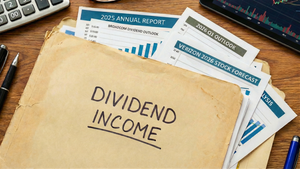
A combination of pent up demand following an election cycle lull — as well as expectations that yields may rise due to Trump policies — led to a flurry of fresh bonds issued by U.S. companies this week.
Thirteen firms issued new investment grade bonds on Tuesday, the most paper brought to market in several months, led by banks including Goldman Sachs GS and Citi . High Yield issues — so called “junk bonds” — experienced a similar frenzy of activity. Debt focused ETFs have sold off moderately in reaction to the busy syndicate calendar. The popular SPDR Bloomberg Short Term High Yield Bond ETF SJNK , for instance, has declined by 0.41% over the past five trading sessions but realized net inflows, as have many other credit focused funds.
ETFs tracking the bond market have reflected this dynamic. According to Blackrock data, the surge into U.S. credit had pushed global fixed income ETFS inflows to reach an annual record already at $376 billion for 2024.
While yields are rising, credit spreads, which are the difference between market prices for treasuries and those of corporate borrowers, are testing muti-decade lows. Following the election, investment grade credit spreads fell to the lowest level in 19 years, while junk spreads tested 17 year lows. Spreads have not reached levels this low during the lifetime of the traders, bankers and asset managers navigating the market.
For investors, these historic spreads may suggest a bullish signal for U.S. stocks as lower cost debt could pave the way for increased buybacks by public companies. Critically, it could fuel a wave of consolidation as the low cost capital, combined with the lax regulation expected from the GOP-controlled government, makes M&A more attractive for acquirers.
Camelot Event-Driven Advisors Portfolio Manager Paul Hoffmeister told Equities.com on Thursday that he agreed that the shift in bond markets bodes well for stocks. Hoffmeister helps to oversee the Camelot Event Driven Fund, which provides hedge fund strategies to mutual fund investors.
“Tight credit spreads and greater risk appetites portend a wave of M&A activity,” Hoffmeister said. He added that an increased volume of interested buyers and shareholder activists could compel corporate boards -to rethink company strategy and consider sales of non-strategic divisions or companies entirely.
After initial fears, impact investors stand firm
After an initial swoon, U.S. clean energy investors appear to remain committed to allocations.
This conclusion draws on a combination of factors including artificial intelligence electricity demand, international competition and red state politicians eager to protect green jobs. In a note to investors on Monday, Wolfe Research analyst Steve Fleishman said fears of rollback for green infrastructure legislation may be overblown. He noted that the Republican margin in the House will be small and that earlier this year 18 Republican House members signed a letter supporting some aspects of the infrastructure bill passed under the Biden administration.
For now, the glass-half-full argument appears to be winning. The largest clean energy ETF, GRID has shed less than 1% following the election while remaining up for the year by over 20%.
Former Secretary of State John Kerry told Bloomberg in a Wednesday interview that the flow of capital into clean energy technologies could not be derailed by Trump administration policies. “There’s an incredible new world of opportunity,” Kerry said, in sectors like AI, nuclear and geothermal.
Read more: EV investors bet on Musk and his new role in Washington






